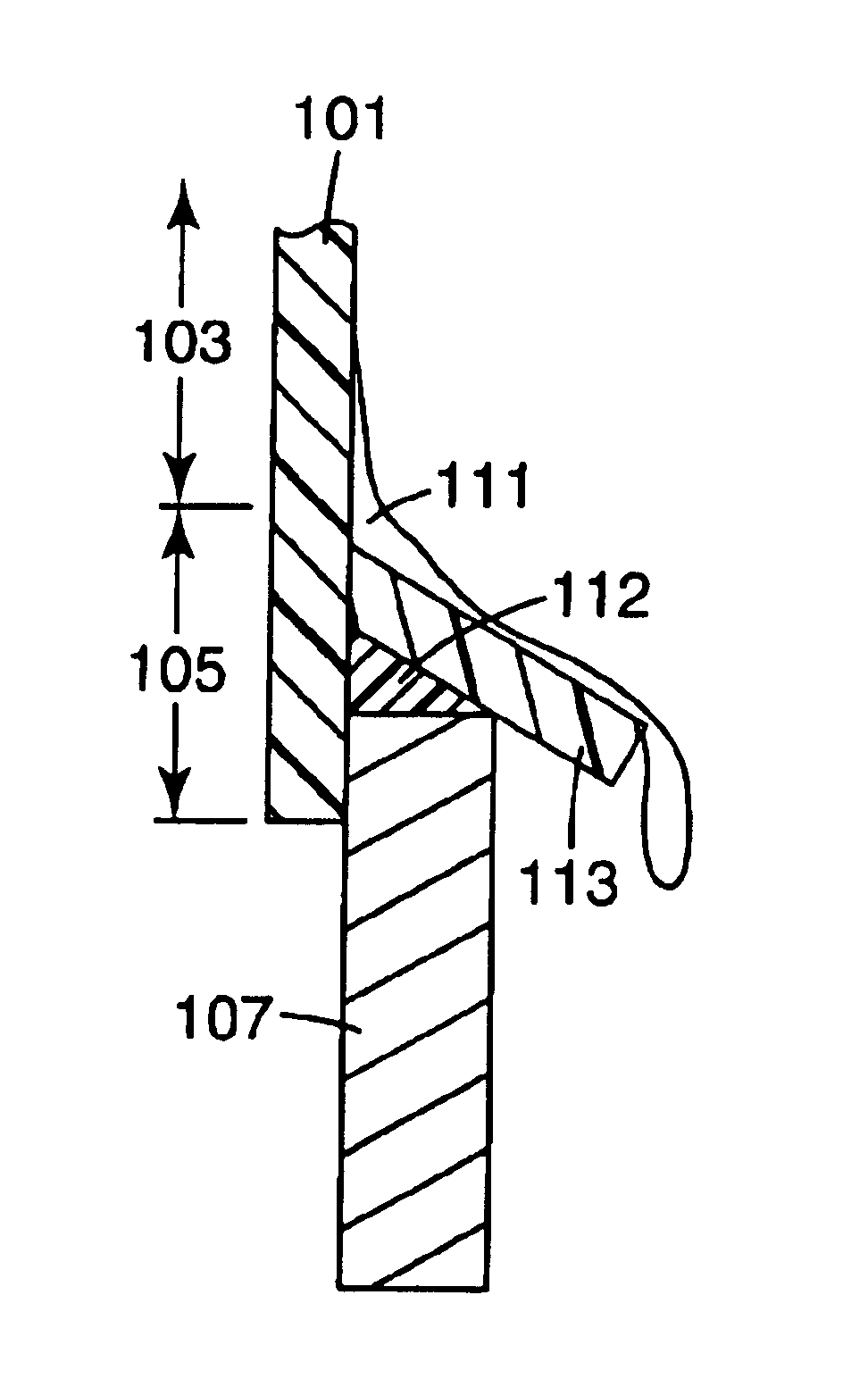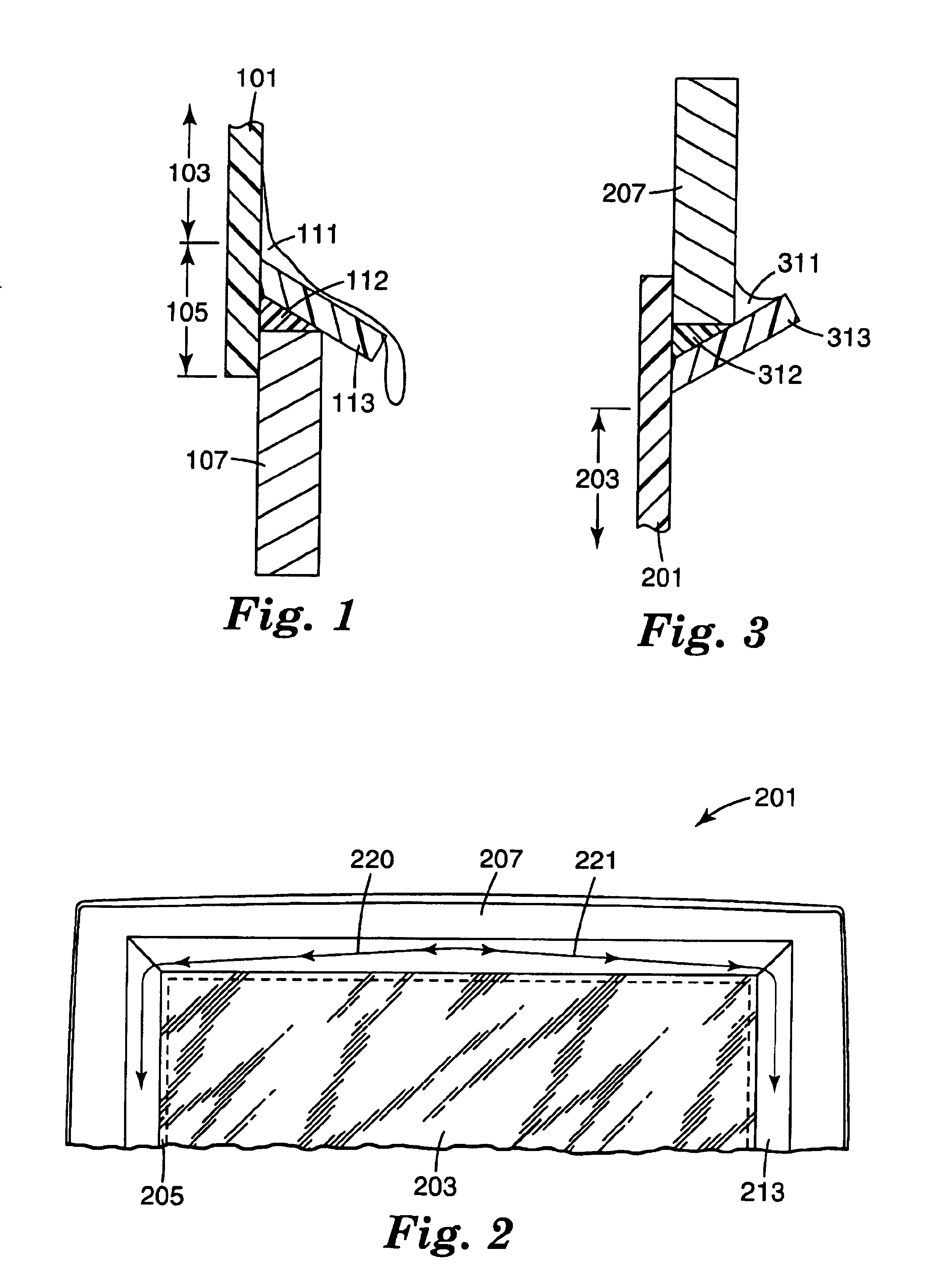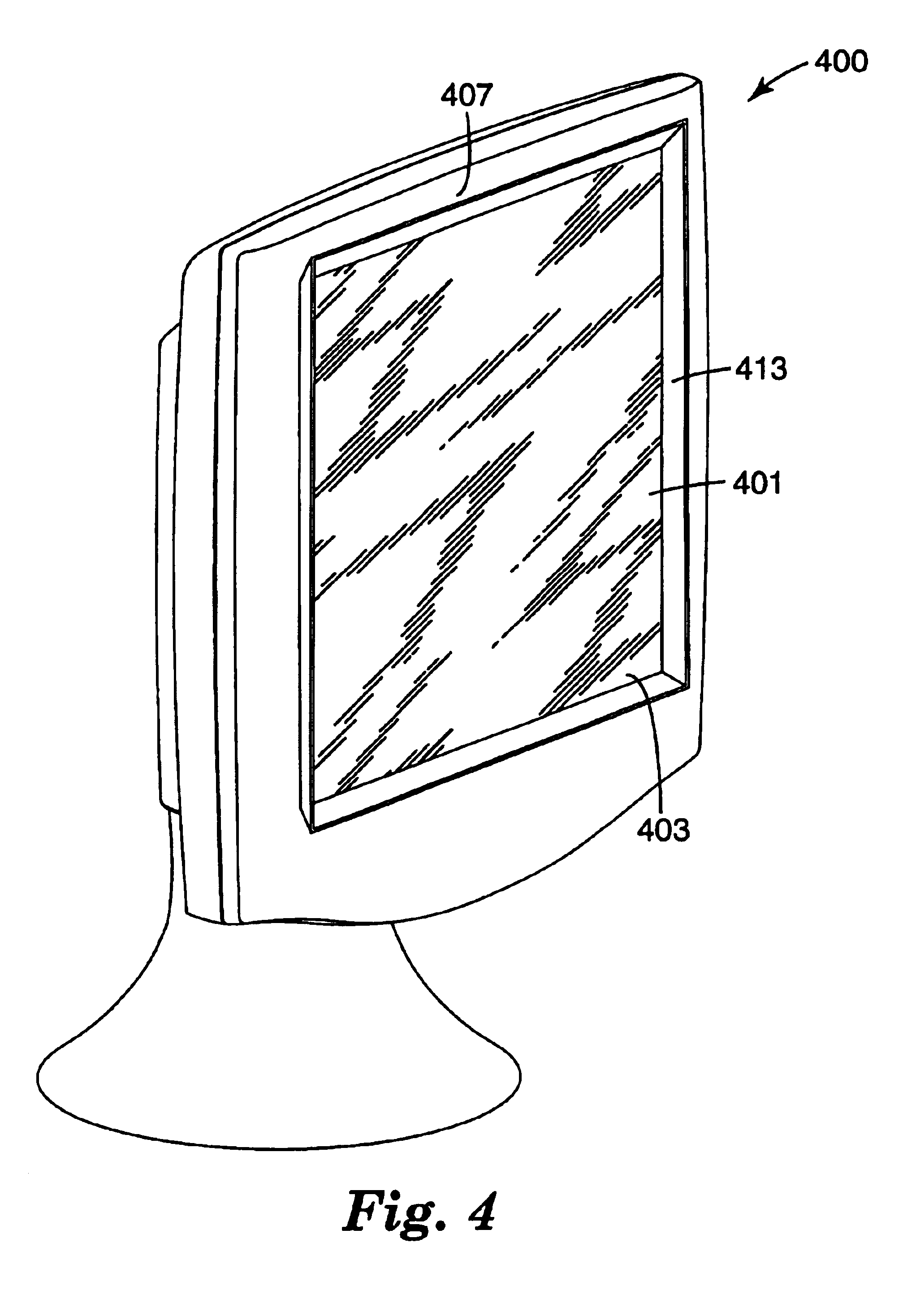Moisture deflector for capacitive NFI touch screens for use with bezels of conductive material
- Summary
- Abstract
- Description
- Claims
- Application Information
AI Technical Summary
Benefits of technology
Problems solved by technology
Method used
Image
Examples
Embodiment Construction
[0012]Briefly described, the present invention is directed at a non-conductive barrier for use in conjunction with a touch screen to prevent streaming liquids from directly or capacitively coupling an active portion of the touch screen with a conductive bezel around the touch screen. The non-conductive barrier is also configured to direct liquids streaming downward from an upper portion of the touch screen outward and away from the active portion of the touch screen.
[0013]FIG. 1 is a cross-sectional cutaway view of a touch screen display 100 including one embodiment of the present invention. Preferably, the touch screen display 100 includes a Near Field Imaging (NFI) capacitive touch screen 101 having an active portion 103 and an inactive portion 105. As discussed above, an electric field is set up on the active portion 103 and a controller (not shown) senses a modulation of the electric field caused by a touch or contact on or near the active portion 103. The inactive portion 105 s...
PUM
 Login to View More
Login to View More Abstract
Description
Claims
Application Information
 Login to View More
Login to View More - R&D
- Intellectual Property
- Life Sciences
- Materials
- Tech Scout
- Unparalleled Data Quality
- Higher Quality Content
- 60% Fewer Hallucinations
Browse by: Latest US Patents, China's latest patents, Technical Efficacy Thesaurus, Application Domain, Technology Topic, Popular Technical Reports.
© 2025 PatSnap. All rights reserved.Legal|Privacy policy|Modern Slavery Act Transparency Statement|Sitemap|About US| Contact US: help@patsnap.com



